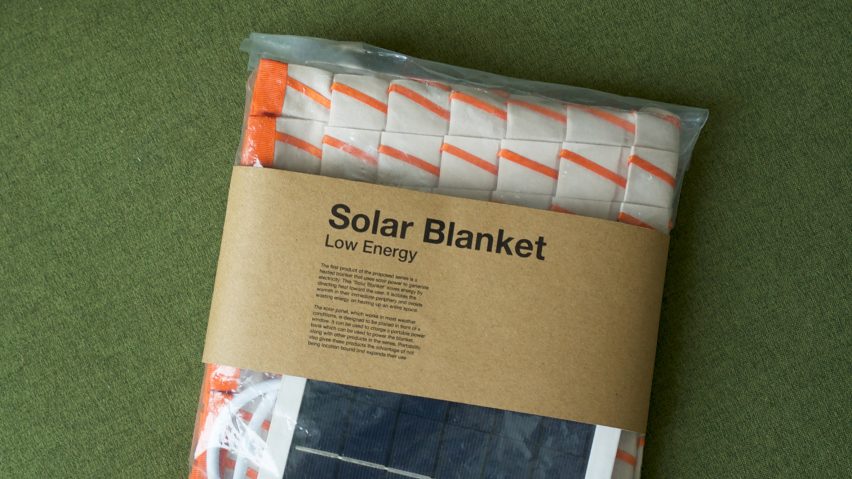In an effort to bring renewable energy to those who need it, Central Saint Martins design graduate Mireille Steinhage has invented a solar-powered blanket that is made from conductive yarn.
The Solar Blanket is a solar-powered heated blanket that can be wrapped around a person or draped over a sofa to direct heat toward those sitting on it.
A recent graduate of the Masters in Material Futures at London's Central Saint Martins, Steinhage developed the blanket as part of her project exploring ways to make renewable energy products more accessible and affordable – a project she called People Power.
"The emphasis on personal responsibility when it comes to sustainability is big," said Steinhage. "However, it's not so simple for the reported 14.5 million people living in relative poverty in the UK."
"These people might not be able to make sustainability a personal priority, even if they wanted to," she continued. "If we want to realise a more sustainable future, being sustainable should be accessible to everyone."
The Solar Blanket comes with a solar panel that is designed to be placed in a window to charge a portable battery. Once charged, the battery can be plugged into the blanket or other products to power them.
Steinhage started working on People Power in 2020, before this year's energy and cost-of-living crises, but identified the heated blanket as a product that could make a big difference to people if it were made with renewable energy.
"Solar Blanket is different from a standard electric blanket as it uses solar power to heat up," she told Dezeen. "This makes it more affordable and sustainable, as you only have to spend money on it once."
The blanket is made from polyester fabric and striped with a conductive yarn to generate heat. The yarn is covered by polyester ribbon to prevent it from coming into contact with itself when folded.
Steinhage said she chose the materials for their functionality, cost-effectiveness and durability, and because they are all easy to separate for recycling.
Steinhage estimates that the Solar Blanket could retail for less than £10, although it is hard to say for certain at this point in the design process. The designer is hoping to develop the blanket further and find a manufacturing partner.
She currently has three prototypes, each with a low voltage of between 5 and 12 volts. The 12-volt blanket heats to around 30 degrees Celsius and operating for two hours on a full charge. The accompanying solar panel works in most weather conditions.
Steinhage has aspirations to extend the People Power line to other affordable products such as a table light or fan, as the blanket won't be used much in the summer and the solar panel could be sitting unused.
The project previously saw her run a workshop in the coastal town of Jaywick, which the government has identified as one of the most deprived areas of Britain. The workshop aimed to empower children with the skills to work with solar power through experiments such as soldering LED lights onto mini 5-volt solar panels.
Dutch designer Marjan van Aubel has also attempted to democratise solar energy with her invention, a solar lamp called Sunne that is designed to hang in a window.

